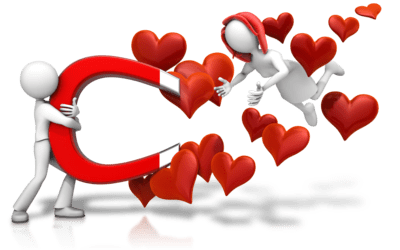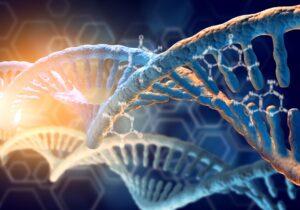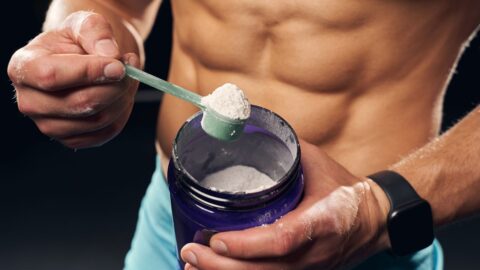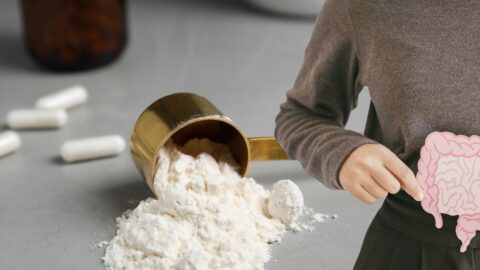Chemistry of Love, Lust and Attraction
by Vanita Dahia
What a wonderful feeling to be in love!
Love is a beautiful phenomenon that leaves us feeling giddy with racing hearts, flushed skin and sweaty palms. However, it’s a rather challenging task to define or describe the emotion of love as it means and feels different for each of us.
The emotion of love has varying levels of depth when in love with your lover, love relationship with your dog or loving a child.
Love functions biologically to ensure survival of the human species in households, communities and the world.
What drives the sweaty palms, racing heart or obsessive thoughts of each other?
We talk about chemistry between two people when sparks fly as we fall in love or cuddle up in comfort in each other’s arms.
The Role of Love Chemistry in the Love Laboratory
One person will be attracted to another by finding the common “chemistry” between each other. People chose partners with chemicals that complement their own. Dating agencies match profiles though personalities, like, dislikes, as well as their chemistry.
As a child you familiarise yourself with a mother\’s nurturing love or a father’s strength. This shapes the feelings, traits and characteristics you will seek in a partner.
“If I go into the place in myself that is love, and you go into the place in yourself that is love, we are together in love. Then you and I are truly in love, the state of being love. That’s the entrance to Oneness. That’s the space I entered when I met my guru.”
Ram Dass
The multi-dimensional construct of love starts with brain chemicals which modulate neural pathways, not the sexual gonads. There are three stages of love, lust, attraction and attachment driven by neurotransmitters and neuromodultors.
Stages of Love from a Hormone Perspective
The First Stage of Love is a play between sex hormones, Estrogen and Testosterone.
The level of Estrogen and Testosterone increases tremendously during puberty shaping sexual function and activity, development of sexual maturity and stimulation of feelings of lust.
A woman with high Estrogen will be attracted to a man with high testosterone.
The Second Stage of Love is driven by dopamine, noradrenaline and serotonin. Dopamine is the reward hormone that triggers a feeling of contentment and satisfaction which gives a felling of pleasure and bliss. Dopamine is involved in both sexual arousal and romantic feelings. It also has an important role in the brain’s pleasure and reward pathways.
Dopamine is metabolised to Noradrenaline and Adrenaline, the catecholamines that are get us into the flight-fright-freeze response. The rise of the catecholamines lead to the racing thumping heart, sweaty palms and super-energisation. We can climb the highest mountain or swim the deepest seas and we sing songs to this effect when we’re in love . This is the adrenalin rush!
In a study on female prairie voles (similar to wolves), researchers activated the dopamine receptors in the male vole’s nucleus accumbens, part of the reward pathway. (1) The male became attached to a female even without mating. Blocking the same dopamine receptors prevented males from developing a partner preference, even when oxytocin, the “cuddle” hormone was present.
The combined elevation of Noradrenaline and Dopamine produces elation, intense energy, sleeplessness, loss of attention, and exquisite delight from the tiniest of words or actions.
The novelty and freshness of all experiences in love drives up dopamine in the brain which can help sustain romantic love.
The Third Stage of Love is touching, holding, feeling, or playing footsie. This is driven by a cuddle hormone called Oxytocin. Oxytocin is attachment, developing common interests or finding innovative ways of love making.
Dopamine stimulates the production of oxytocin, sometimes known as \”the cuddle chemical.\” Oxytocin is best known for its role in mothering, stimulating contractions during labour and breast feeding. Both males and females release this nurturing hormone when touching and cuddling, with the oxytocin level peaking during orgasm.
This stage of attachment is driven by Oxytocin and Vasopressin allowing a couple to bond and feel comfortable with each other. Oxytocin is associated with the ability to maintain healthy interpersonal relationships and healthy psychological boundaries with other people.”
Vasopressin, an anti-diuretic hormone, is another chemical that has an effect on sustaining relationships. When oxytocin and vasopressin decline, it will interrupt the dopamine and noradrenaline pathways, which is why the passion in love fades.
Life without love is like a tree without blossoms or fruit.
Khalil Gibran
Magnetic Resonance Imaging
Researchers have used functional magnetic resonance imaging (fMRI) to observe people’s brains when they are looking at their loved one. (2) The scans showed increased blood flow in areas concentrated with dopamine receptors, which are associated with a state of euphoria, craving to hear your loved one’s voice, and addiction. Every thought is occupied by your loved one.
Decreased frontal cortex activity
Romantic love slows down activity in the frontal cortex, relaxing the discerning judgmental part of the brain. You are less inclined to see your partners shortcomings or don’t recognise a child misbehaving.
The brain becomes fixated on affection when in love. The heart rules the head, the limbic part of the brain rules the cortex.
The cortex controls logical thinking whereas emotions are processed by the limbic system. When too many happy chemicals like PEA and dopamine flood your brain, they head straight for the limbic system.
Love recognizes no barriers. It jumps hurdles, leaps a fence, penetrates walls to arrive at its destination full of hope.
Maya Angelou
Pheromones and Genetics in Love
Love might be in the air on Valentine\’s Day, metaphorically speaking. Scientists have debated on love is in actual fact in the air – in the smell or the olfactory regions of the brain. Research has shown that Androstadiene, a male hormone found in male axillary sweat is a great pheromone for women. (3) Androstadiene improves mood and focus, and provides heightened focus which is important for women’s sexual response and sexual satisfaction.
The evidence suggests that androstadienone also plays a role in mate selection, perhaps through the attribution of attractiveness to facial and bodily features of potential mates.
MHC gene
People rate the body odours of people with MHC genes dissimilar from their own as more attractive. Researchers at University of California shows that children who inherit different MHC from each of their parents have broader immunity. (4)
After the Honeymoon
When the honeymoon is over, you’ve got to keep at the relationship and work on getting back into it. The body gets used to the love stimulants and builds a tolerance to uppers like PEA and Dopamine.
The brain starts to produce more endorphins, brain opiates more like morphine rather than speed. These chemicals calm the mind, kill the pain, and reduce anxiety. Helen Fisher in the anatomy of love confirms that relationships can fail when one prefers the revving-up effects of brain amphetamines to the pain-killing effects of endorphins. Short term relationships are typically driven by amphetamines and may, if luck has it, transition to endorphins.
The brain makes PEA, a well-known love-related chemical, phenylethylamine which acts as a natural amphetamine. PEA allows you to kick up your heels or provide energy to talk all night.
PEA can peak in high intensity activities like bungy jumping or sky diving. PEA is found in chocolate. It’s no wonder we feel so satisfied when indulging in chocolate – it contains PEA, the love-drug!
Chocolate, our love food, also elevates levels of dopamine in the brain.
Valentine’s Day
On February 14th each year, lovers express their love and affection with greetings and gifts of flowers, chocolates, jewellery and experiences.
The tradition of giving a box of chocolates was started in the 19th century by Richard Cadbury and has since been a commercial incentivised occasion.
The ancient Romans may also be responsible for the name of our modern day of love.
The dark side of Valentines Day
Emperor Claudius II executed two men, both named Valentine on February 14 of different years in the 3rd century A.D. Their martyrdom was honoured by the Catholic Church with the celebration of St. Valentine\’s Day. Valentine\’s Day is also called St. Valentine\’s Day.
At the end of the 5th century, Pope Gelasius I replaced Lupercalia with St. Valentine\’s Day. It came to be celebrated as a day of romance from about the 14th century.
Love is a complex neurobiological phenomenon, relying on lust, attractiveness, pheromones, balance of activation of cortex and limbic system in the brain and optimal neuromodulation.
Love and lust are pleasurable and have stress-reducing and health-promoting potential.
Chemistry is not the be all and end all of love. Culture, personality, effort, mental state and commitment will ultimately decide who turns you on and who doesn\’t.
We manufacture our own neurotransmitters from the very nutrients we eat, from specific amino acids, vitamins and herbs.
If you don’t have that ‘loving feeling’ right now, you may like to know what your own neurotransmitter levels are and how to naturally enhance them, without needing a relationship to get you there! You never know, if you are feeling more loving within, you may be even more attractive to someone who wants to love you!
Testing Brain Chemicals for love and Attraction
References
- Gingrich B, Liu Y, Cascio C, Wang Z, Insel TR. Dopamine D2 receptors in the nucleus accumbens are important for social attachment in female prairie voles (Microtus ochrogaster). Behav Neurosci. 2000 Feb;114(1):173-83. doi: 10.1037//0735-7044.114.1.173. PMID: 10718272.
- Fisher H, Aron A, Brown LL. Romantic love: an fMRI study of a neural mechanism for mate choice. J Comp Neurol. 2005 Dec 5;493(1):58-62. doi: 10.1002/cne.20772. PMID: 16255001.
- Verhaeghe J, Gheysen R, Enzlin P. Pheromones and their effect on women\’s mood and sexuality. Facts Views Vis Obgyn. 2013;5(3):189-195.
- Kromer J, Hummel T, Pietrowski D, et al. Influence of HLA on human partnership and sexual satisfaction. Sci Rep. 2016;6:32550. Published 2016 Aug 31. doi:10.1038/srep32550




